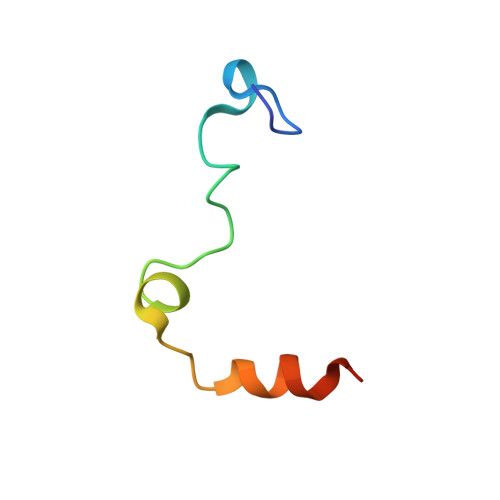Structural identification of the pathway of long-range communication in an allosteric enzyme.
Gandhi, P.S., Chen, Z., Mathews, F.S., Di Cera, E.(2008) Proc Natl Acad Sci U S A 105: 1832-1837
- PubMed: 18250335
- DOI: https://doi.org/10.1073/pnas.0710894105
- Primary Citation of Related Structures:
3BEF, 3BEI - PubMed Abstract:
Allostery is a common mechanism of regulation of enzyme activity and specificity, and its signatures are readily identified from functional studies. For many allosteric systems, structural evidence exists of long-range communication among protein domains, but rarely has this communication been traced to a detailed pathway. The thrombin mutant D102N is stabilized in a self-inhibited conformation where access to the active site is occluded by a collapse of the entire 215-219 beta-strand. Binding of a fragment of the protease activated receptor PAR1 to exosite I, 30-A away from the active site region, causes a large conformational change that corrects the position of the 215-219 beta-strand and restores access to the active site. The crystal structure of the thrombin-PAR1 complex, solved at 2.2-A resolution, reveals the details of this long-range allosteric communication in terms of a network of polar interactions.
Organizational Affiliation:
Department of Biochemistry and Molecular Biophysics, Washington University School of Medicine, Box 8231, St. Louis, MO 63110, USA.

















